The Audi e-tron GT is a high-performance electric vehicle that shares many similarities with its Porsche sibling, the Taycan. Both premium cars offer a luxurious EV experience – they’re ridiculously quick and claim to run for up to 296 miles on a single charge.
Of course, one can’t ignore the Model S, Volkswagen Group’s biggest rival. In its ‘Plaid’ configuration, the Tesla is the fastest non-hypercar on the market achieving 0-60mph in a claimed sub-2 seconds, while its ‘Long Range’ compatriot claims to run for 405 miles on a single charge, which also makes it the longest range EV.
If you’d prefer to watch a review of the Audi e-tron GT, head on over to our YouTube channel.
Audi e-tron GT price & competition
At the time of writing, the Audi e-tron GT is the cheapest of the bunch in its dual-motor configuration. It starts from £80,850, with the Vorsprung version that’s on review starting from £106,950 – both offer 296 miles of range and a 0-62mph time of 4.1 seconds. The Taycan 4S starts from £84,030 where it will get to 62mph in 4 seconds and claims to run for 288 miles on a single charge. On the other hand, the Tesla Model S Long Range comes in at £87,980, offers 405 miles of range and will get to 60mph from a standstill in a claimed 3.1 seconds.
Find the best Audi e-tron GT deals
There are, however, a few other iterations of each of these vehicles. In the Audi camp, there’s the RS e-tron GT at £111,900, the RS e-tron GT Carbon Black at £125,490 and finally the top-spec RS e-tron GT Carbon Vorsprung at £134,290. All the RS variants claim to run for 283 miles on a single charge and get to 62mph from a standstill in just 3.3 seconds.
You can see what each of Audi’s trim levels offer, below (click to expand):
Shift to Porsche’s offering, and you’ll find the regular rear-wheel-drive (RWD) Taycan starts from £72,850 – it claims to run for up to 301 miles on a single charge and attains 0-62mph in 5.4 seconds. Move past the Taycan 4S, and you’ll find the Taycan Turbo that has more power than its cheaper siblings. It’ll get from 0-62mph in 3.2 seconds and claims to run for up to 281 miles on a single charge – it starts from £116,870. Should you want the ultimate Porsche EV, then the Taycan Turbo S is for you: it’ll get you to 0-62mph in a mere 2.8 seconds and it’ll net 258 miles on a single charge; prices start from £139,280.
As for Tesla, the American automaker only offers one other iteration, the ‘Plaid’, which claims to get to 60mph (not 62mph) from a standstill in ridiculous 1.99 seconds, and also has a 396-mile range. This tri-motor EV costs £118,980. The only catch for UK/EU residents is that either variant of the new Model S come with a long lead time: delivery is estimated at the end of 2022. By contrast, both the German-made Audi and Porsche EVs can be in your garage a lot sooner.
Read next: Volkswagen ID.3 review: The best electric hatchback?
Audi e-tron GT exterior review
From the exterior, the e-tron GT is a marvel and very on-brand with the rest of Audi’s fleet. At the front, the car has an elongated bonnet with stylish arrow-like headlights and a covered front grille – you might want to opt for the £350 ‘Singleframe grille in Body Colour’ option, which further blends the front grille with the rest of the vehicle’s body. Elsewhere, the front bumper has cleverly designed air ducts that help cool the brakes by feeding air toward the side of the car.
In turn, there are more air ducts near the front wheel arches, which allow the air to continuously flow past the flared side skirts and the wide rear wheel arches. To further bolster its aerodynamic flair, a rear spoiler automatically pops up at higher speeds.
As for the pictured RS 21″ alloys wheels – which aren’t available with UK orders of the regular e-tron GT – these also give the vehicle a very sporty look, but the 20″ alloys that come as standard or the £300 gloss-turned variant ooze plenty of style; in our opinion, the standard setup is a definite step-up from the Porsche Taycan RWD’s 19″ Aero wheels.
At the rear, the e-tron GT has similarly got a smart profile. The real head-turner is its LED taillights that stretch from one end to the other, and combined with its fish-like design, it makes the e-tron GT stand out from the rest of the pack.
However, much like the Porsche Taycan, the e-tron GT is a very large-sized car. It measures 4,989mm in length and 2158 in width including mirrors. Its German sibling clocks in at 4,963 and 2,144mm, respectively. Both are roughly 1.4m tall, too. This does make the regular e-tron GT a bit of a nightmare to drive within inner-city routes or multistorey car parks that are tight for space. It’s very easy to curb those stylish rims and does take some time to get acclimatised with its wide-body profile.
As for colour options, as standard, it comes in a solid ‘Ibis white’ finish but can be changed to a metallic ‘Ascari blue’, ‘Floret silver’, ‘Mythos black’, ‘Suzuka grey’, ‘Tango red’ or the pictured ‘Kemora Grey’ for £950. A ‘Daytona grey’ pearl-effect finish is also available for the same price, while ‘Audi exclusive’ paint finishes can set you back up to £4,275.
On an aside, there’s a small segment toward the rear wheels that has an added layer of protection for the vehicle’s bodywork. Indeed, this is in place to protect small rocks from damaging the side of the car.
Read next: Polestar 2 review: The all-electric muscle car
Audi e-tron GT interior & tech review
Moving inside the cabin, the Audi is subjectively our favourite. Not only does it scream quality with the automaker’s choice of materials and colours, but it’s also extremely practical. See, unlike the Porsche, the Audi still retains physical buttons on the dashboard and does away with the impractical secondary display for the climate controls.
Elsewhere, there are still familiar-looking buttons on the steering wheel with stalks on either side, whereas the latest Tesla Model S goes a step too far in the direction of futurism whereby it features a yoke (as you’d find on an aircraft) and eradicates all buttons and stalks in favour of a large-sized centre display – that includes the gear selector, which turns into a swipe function, instead.
Indeed, Audi has kept things simple and in our opinion, it’s absolutely sublime. It’s arguably one of the best-looking cabins in a sports car – from the stylish seats to the snazzy dashboard. Speaking of which, at the centre, there’s a 10.1″ multi-touch display that supports both Android Auto and Apple CarPlay – again, one-upping its German sibling by not omitting the former operating system. The screen is also slightly angled toward the driver and at arm’s reach, which makes it intuitive to use when on the road.
Read next: Our favourite power banks for long journeys
When it comes to entertainment, the e-tron GT comes with 10 speakers dotted around the cabin, which combined output a measly 150 Watts. Add the £3,590 ‘Comfort and Sound Pack’ as an option and you’ll get the 710-Watt Bang & Olufsen system, which bolsters the number of speakers up to sixteen. If you’d like to hear how the B&O system performs, watch our detailed review of it on YouTube.
Keeping on the subject of technology, the car’s 12.3″ instrument cluster is vivid, customisable and provides all the key information that one would require. To takes things a step further, you can add the £1,395 ‘Head-up Display’ option, which will show your speed, the road limit and the driver assistance systems in use. It’s a handy feature, though, its asking price is steep – the feature does come as standard in the more expensive Vorsprung trim.
To interact with the instrument cluster or to control your media, there are physical buttons planted on the steering wheel. The layout is comprehensive and the fantastic design of the steering wheel makes light work of flicking through the menus. If your front passenger also wants to control media playback, and doesn’t want to tinker around with the infotainment system, a handy touch-sensitive and clickable pad by the centre console fulfils this function. Move your finger in a circular fashion on the pad and it’ll adjust the volume – similar to that of an iPod.
On the centre console, there’s a simple and stylish gear selector. It’s easy to operate and yet again, doesn’t rely on fiddling with the infotainment system to select a gear – as you would have to do on the new Tesla Model S.
There’s also a start/stop button, which works as the name would suggest. It’s refreshing to see this included, as a few of Volkswagen’s other vehicles (ID.3 and ID.4) have gone down the route of a pressure sensor located within the front seat; this automatically switches on/off the vehicle. The same behaviour appears in the likes of the Polestar 2 and the Volvo XC40 Recharge Twin. Now while these vehicles might seem more intuitive to get up and go, it’s cumbersome if the driver leaves the cabin whilst other passengers are still sat inside the cabin. Keeping this button in place makes the Audi feel a bit more familiar to new EV owners.
Read next: Kia e-Niro review: The best all-electric SUV?
Audi e-tron GT storage review
Within the centre console, there are two cupholder spaces with rubberised grips to prevent smaller cups from flailing about. The centre armrest also opens up to reveal a small storage compartment. Here, you’ll find two Type-C inputs that can be used for charging or to connect up to the infotainment system, and a handy phone holder that supports wireless charging. The latter’s design is perfect and will accommodate large-sized smartphones, such as the Samsung Galaxy S10+, a phone that sports a 6.4″ display. The same couldn’t be said about the BMW X2 xDrive25e, which opts for a small compartment limiting you to wirelessly charge phones that don’t surpass the 6″ size.
Elsewhere, the e-tron GT has front door bins that are large enough to accommodate a 500ml bottle, or a large-sized purse or wallet. The rear two, however, are far more limited in their storage capacity. The glove compartment also provides a means of storing valuables.
Read next: The best dash cams to mount inside your vehicle
Of course, the biggest storage capacity comes in form of the vehicle’s boot, where you’ll find 405 litres at your disposal – larger than the 366 litres on offer with the Porsche Taycan; note, Audi’s 405-litre figure decreases to 350 litres with the B&O speaker upgrade, as it factors in a rear-mounted subwoofer.
Audi hasn’t provided an official figure for the rear cargo volume with the seats folded down, but one can only imagine this figure sits at around 1,150 litres. Elsewhere, a small underfloor storage compartment also makes it handy to stow away a singular charging cable from view.
In order to access the boot, it’s very easy, as the e-tron GT features an electric tailgate. It can be opened via the remote, a button found within the driver’s side door or initiated by pressing a button located above the rear number plate.
The same, however, can’t be said about the bonnet compartment (also known as the ‘frunk’), as the only means of opening it is to press a button located within the inner part of the driver’s side door. Indeed, to open the frunk you’ll need to have the front driver’s door open, which can be a little inconvenient. Both the Porsche and Tesla have a latch release via their respective displays; one could only hope this feature will be added to the Audi via a future software update.
Awkwardness aside, the size of the frunk is extremely large. It comes in at 81 litres, which should suffice for a small grocery shop or even cabin-sized luggage. It, alongside the Porsche Taycan’s frunk, is one of the largest front storage compartments we’ve ever come across.
Read next: Hyundai Kona Electric review: Kia e-Niro alternative?
Audi e-tron GT comfort review
Moving back inside the cabin, the e-tron GT is supremely comfortable. At the front, you get 8-way electronically adjustable, heated front Sports Seats as standard. As an additional option or as standard in the Vorsprung trim, you’ll find 18-way adjustable front Sports Seats Pro in Nappa leather and a massage function.
At the rear, the seats are similarly comfortable and with a 40:20:40 folding design, meaning you can transport elongated goods through the ski latch. If the middle seat isn’t required, rear occupants can also use it as an armrest, where within the dropdown segment they’ll find two cupholder spaces.
When it comes to headroom and legroom, it’s excellent at the front of the cabin. 6-foot 2-inches (188cm) individuals won’t feel henned in, namely with fully adjustable seats at the front. At the rear, legroom is excellent, where it’s definitely roomier than the Porsche Taycan that we tested. However, headroom isn’t as plentiful, where 6-foot (182cm) individuals might feel the inner part of the roof resting on their heads. Of course, one could easily slouch, but that’s not advisable for posture. Elsewhere, the rear seats are slightly diagonally wedged, which might cause some discomfort on longer excursions.
It should also be noted that the Audi e-tron GT, as standard, comes with a panoramic glass sunroof. This brings in plenty of additional light, and yet, blocks out harmful sun rays. Alas, there’s no retractable sunshade for those who would prefer a darker cabin.
Now while you might not regularly gaze into the night sky, what will be of importance, namely as the driver, is visibility. Here, both the front and sides are excellent, however, the rear window is very small. Rightfully, Audi includes a rearview camera and parking sensors as standard, which takes the stress away from reversing into a parking space. You can go a step further with the £1,760 ‘Parking Assistance Pack’, which adds 360-degree cameras, Remote Parking Pilot and Park Assist. The latter feature will identify a parking spot and perform the manoeuvre for you – it is, however, a little hit and miss as to when it can help you. We found that it worked best with parallel parking.
Speaking of manoeuvrability, the e-tron GT has a turning circle of 11.6m, but this figure is brought down by 0.6m with the addition of all-wheel steering in the Vorsprung or RS versions of the car. Here, the rear wheels turn by up to 2.8 degrees in order to help steer the elongated EV in the right direction.
Another key factor when it comes to comfort is cabin noise. The model on review is a pre-production vehicle and as such doesn’t have acoustic glazing, a feature that comes as standard on all e-tron GT trim levels. Despite that fact, the cabin remained extremely silent and is perfectly insulated from the exterior environment.
However, tyre noise does become apparent when driving over rougher terrain and hinders the quiet in-cabin experience. Similarly, some rattle can be heard from the front air vents and rear door bins. We can’t be certain if this is a widespread issue or specific to our vehicle, but one would hope that’s not the case in consumer-bought vehicles. Suffice the say, these issues weren’t present in the Taycan.
Much like the Porsche, the Audi has an electronic sports sound, which comes with a hefty £500 price tag – you can hear a demo of it on Audi’s website. While it does add some an extra lair of excitement, we feel the money can be better spent elsewhere. In some cases, you’ll even want to fully disable the auditory profile as it is reminiscent of an internal combustion engine.
Read next: Renault Zoe review: Best electric family car?
Audi e-tron GT performance review
Regardless of some of the rattles and the fake engine sound, the Audi e-tron GT still provides an incredibly comfortable driving experience, which is thanks to its adaptive shock absorbers. Indeed, it’s incredibly well-versed in dealing with potholes and speed bumps, and yet rides firm around country roads with no perceptible body roll.
The model on review, the Vorsprung version, takes things to another level, as it comes fitted as standard with adaptive air suspension and continual adaptive damping – this option is available on the regular e-Tron GT but is part of the £8,190 ‘Comfort and Sound Pack Plus’ pack. The upgraded setup can be electronically controlled via the infotainment system and much like the standard system allows the 2,351kg car to glide over rougher terrain, but further adds to the degree of comfort and confidence when driving at speed.
But it’s not just the car’s suspension setup that incites confidence around corners, as the e-tron GT comes equipped with Audi’s quattro torque vectoring technology that provides excellent traction control around corners. Even with Electronic Stabilization Control (ESC) disabled it’s hard to send the car sidewards, and in some respect, it’s not as fun to drive as the Taycan. Here, the Porche that operates on a similar system manages to keep a bit of its personality – it’ll lose its backend when you go full throttle around a bend, while the e-tron GT will simply remain planted to the tarmac. If you will, the Audi is the more sensible out of the two.
Find the best Audi e-tron GT deals
The same could be said about the driver’s feel – the Porsche retains a bit more connection with the driver, while the Audi loses a touch with its number-feeling steering wheel. That’s not to say the Audi won’t give you that level of excitement, but rather, its Porsche sibling still retains the number one spot for an EV. Both of the German vehicles are certainly a cut above the Tesla Model S, which simply cannot compete with either Audi or Porsche’s EVs.
On the subject of traction, all e-tron GT’s come fitted with an all-wheel-drive system, with the RS variant adding a regulated rear-axle differential lock – our pre-production model came with it fitted despite it being the regular e-tron GT model. Note, this feature cannot be added as an option for regular consumers.
Moving onto raw performance, the regular quattro model has two electric motors, one on each axle. The front motor outputs 175 kW (235 hp), and the rear outputs 320 kW (429 hp). Combined, however, these output 350 kW (469 hp) of power and in Boost mode via launch control extend up to 390 kW (522 hp) for up to 2.5 seconds. The total amount of torque is 640 Nm in Boost mode, and 630 Nm in regular driving. Its motor configuration combined with the excellent quattro system, means in launch control mode, it’ll propel you to 60mph from a standstill in a tested 3.95 seconds.
The RS model is a different animal, where its motor configuration is near-identical: the front outputs 175 kW (235 hp), while the rear sits at 335 kW (449 hp). The total power output of the system is 440 kW (590 hp) and in Boost mode rises to 475 kW (636 hp), delivering up to 840 Nm of torque. It’s claimed to hit 62mph from a standstill in just 3.3 seconds. A similar figure we attained when testing the Porsche Taycan Turbo.
When it comes to launching the vehicle from a standstill and going at speed (the e-tron GT is limited to 152.2mph, while the RS gets to 155.3mph), we noticed that the Audi’s two-speed transmission has a bit of a kick. It’s somewhat reminiscent of the BMW E46 CSL’s single-clutch transmission, an odd feeling to say the least in a modern car. In our tests, we found the secondary gear only comes into play at higher speeds or when the car is launched from a standstill; it doesn’t engage at lower speeds or when the car’s gradually increases in speed. That shunting-feeling isn’t something we noted in the Porsche and yet again, feels the better vehicle to drive.
Nevertheless, the Audi’s powerful drivetrain is certainly impressive and so is its braking performance. As standard, the e-tron GT features 360x30mm 6-piston front brakes and 358x28mm 4-piston rear brakes. The RS gets tungsten carbide brakes, with 410x40mm 6-piston front brakes and 365x28mm 4-piston rears.
Both vehicles have the option to be upgraded with ceramic composite brake discs, where the front moves to a 420x40mm 10-piston setup, and the rear to 410x32mm 4-piston. This setup also saves 20kg of weight but will cost a whopping £5,100 as an additional option. One can only imagine this option will be picked by car enthusiasts who frequent track days, as the regular setup is extremely impressive under heavy braking and gives plenty of confidence when cornering.
Read next: Porsche Taycan Turbo review: 670hp of EV goodness
Audi e-tron GT electric range review
The Audi e-tron GT also features regenerative braking, which works when one lifts off the accelerator pedal. The level of regenerative braking can be adjusted via the flappy paddles found behind the steering wheel, however, the amount it decelerates the vehicle is somewhat disappointing. At only 0.3g, it’s not harsh enough to come to a complete standstill and thus, one-pedal driving isn’t possible.
While we understand Audi’s reasoning in wanting to keep it similar to an ICE-based vehicle, we do feel it’s a missed opportunity. At the very least, we’d have expected the automaker to provide an option through the infotainment system, allowing users to make their own decisions – a consumer might want to drive with one-pedal within the city, and then later disable it when entering a track. Alas, that’s not an option, where the same type of behaviour was noted in Porsche’s EV.
Of course, regenerative braking goes hand-in-hand with the vehicle’s claimed range, as it recoups energy back into the 93.4 kWh (84 kWh usable) battery pack. Here, the Audi fares better than its Porsche compatriot, where we had it tested at 230-250 miles on a single charge, surpassing the Taycan’s 190-mile range. Indeed, the Audi achieves a more respectable range, and if one were to drive conservatively, you could surpass our mixed driving figures hitting closer to the 300-mile mark.
While the Audi does impress in comparison to the Porsche Taycan, both German cars are completely outshone by the Model S. Here, spirited drivers can attacin around 350 miles, while those driving conservatively will likely attain the 400-mile claim made by the American automaker. Ultimately, there’s still some way to go in this department from both Audi and Porsche, but we feel the former manufacturer’s real-world range doesn’t instil any range anxiety, while the latter makes it harder to do longer journeys on a single charge.
If you’d like to recharge on the motorway, the e-tron GT, much like its Porsche sibling, can attain up to 270 kW of input from a DC rapid charger. This will take you from 0-80% in just 23 minutes. However, we suspect many won’t have access or be able to locate a 270 kW charger, and instead will be accustom to 100 kW or 50 kW chargers, here the Audi will get to 80% in 45 minutes and 90 minutes, respectively.
Place it on a home or workplace charger and this figure drastically changes – a 3-phase 11 kW charger will go from empty to full in nine hours, a 7 kW charger will take over 14 hours while a 3-pin wall socket will take a whopping 28 hours.
It should be noted that the e-tron GT has two charging inlets: on the driver’s side, there’s a Type 2 port, while on the passenger’s side there’s a Type 2 and CCS port. The charging flaps are manually opened, while the Porsche equivalent offers electronic charging flaps that can be operated via the infotainment system.
Read next: Tesla Model 3 review: Should you buy into the hype?
Audi e-tron GT safety review
When it comes to safety, the e-tron GT has yet to be tested by Euro NCAP, but one can only imagine it’ll attain a similarly impressive 5/5 stars as the Porsche. However, much like the Taycan, the Audi does disappoint in driver assistance systems – for a car that costs upwards of £80K it’s rather primitive.
As standard, it comes with cruise control, lane departure warning with corrective steering intervention and Audi’s pre-sense technology front and basic (autonomous emergency braking system), only.
For £1,355, the ‘Tour Pack’ adds the much-liked Adaptive cruise control with speed limiter, efficiency assist, swerve assist and turn assist; the £1,345 ‘City Assist Pack’ adds Lane change warning with exit warning, and rear and front cross-traffic alert; while the £1,760 ‘Parking Assistance Package’ adds 360-degree cameras, Remote Parking Pilot, and Park Assist. Totted up these options cost £4,460, while the Tesla Model S offers most of these as standard; let alone cars such as the Kia Soul EV that has pretty much all of the above as standard and yet costs £32,445.
We expected more features to come as standard on the regular e-tron GT but of course, you can find them included in the £106K+ Vorsprung model.
Read next: Volvo XC40 Recharge Twin review: A powerful luxury electric SUV
TotallyEV’s verdict on the Audi e-tron GT
For its asking price, the Audi e-tron GT doesn’t excel in all departments, but we’d say it’s the best premium EV on the market: it has a practical interior design, unlike the radically different Tesla Model S; it’s blisteringly quick and offers a fantastic driver’s feel, albeit not quite matching the Taycan; it has a respectable driving range that tops its Porsche sibling; it offers a stunning exterior design that will appeal to current and new Audi customers; and it’s practical in terms of storage space and its ability to comfortably seat five occupants.
Find the best Audi e-tron GT deals
Given all of the above, the Audi e-tron GT receives TotallyEV’s Best Buy award, but would you pick it over the Taycan or Model S? Let us know in the comments section below or on social media; we’re on: YouTube, Instagram, Facebook, Twitter and LinkedIn.

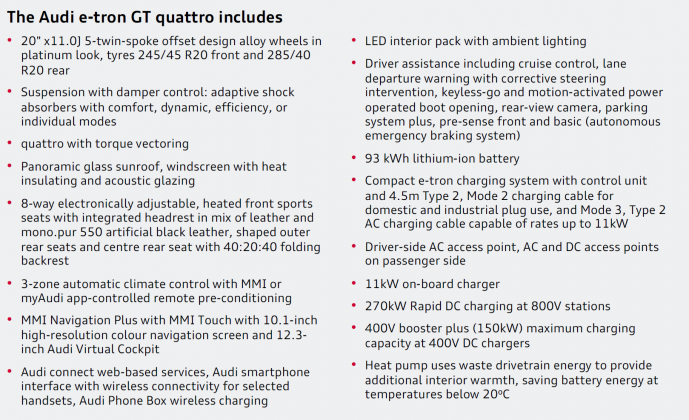
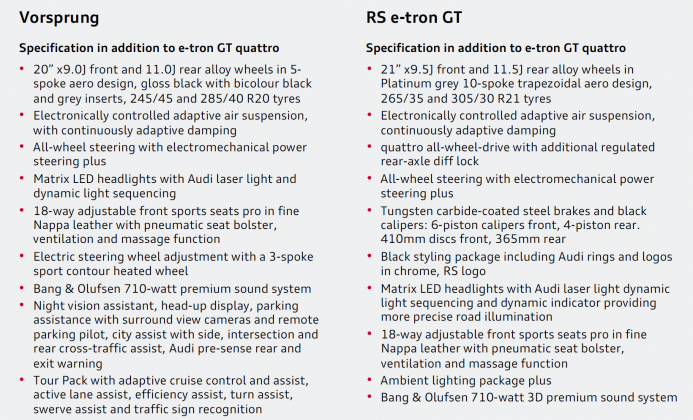
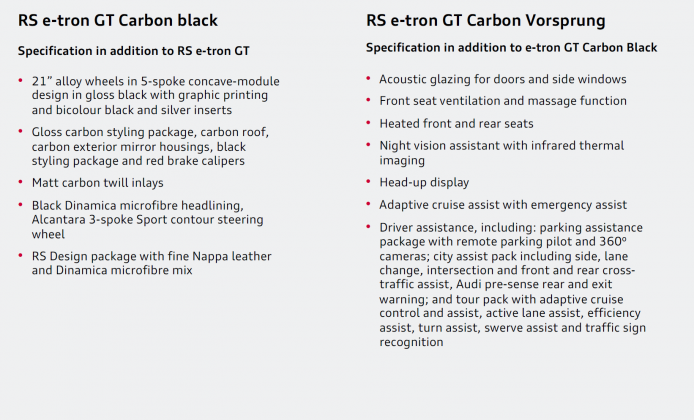
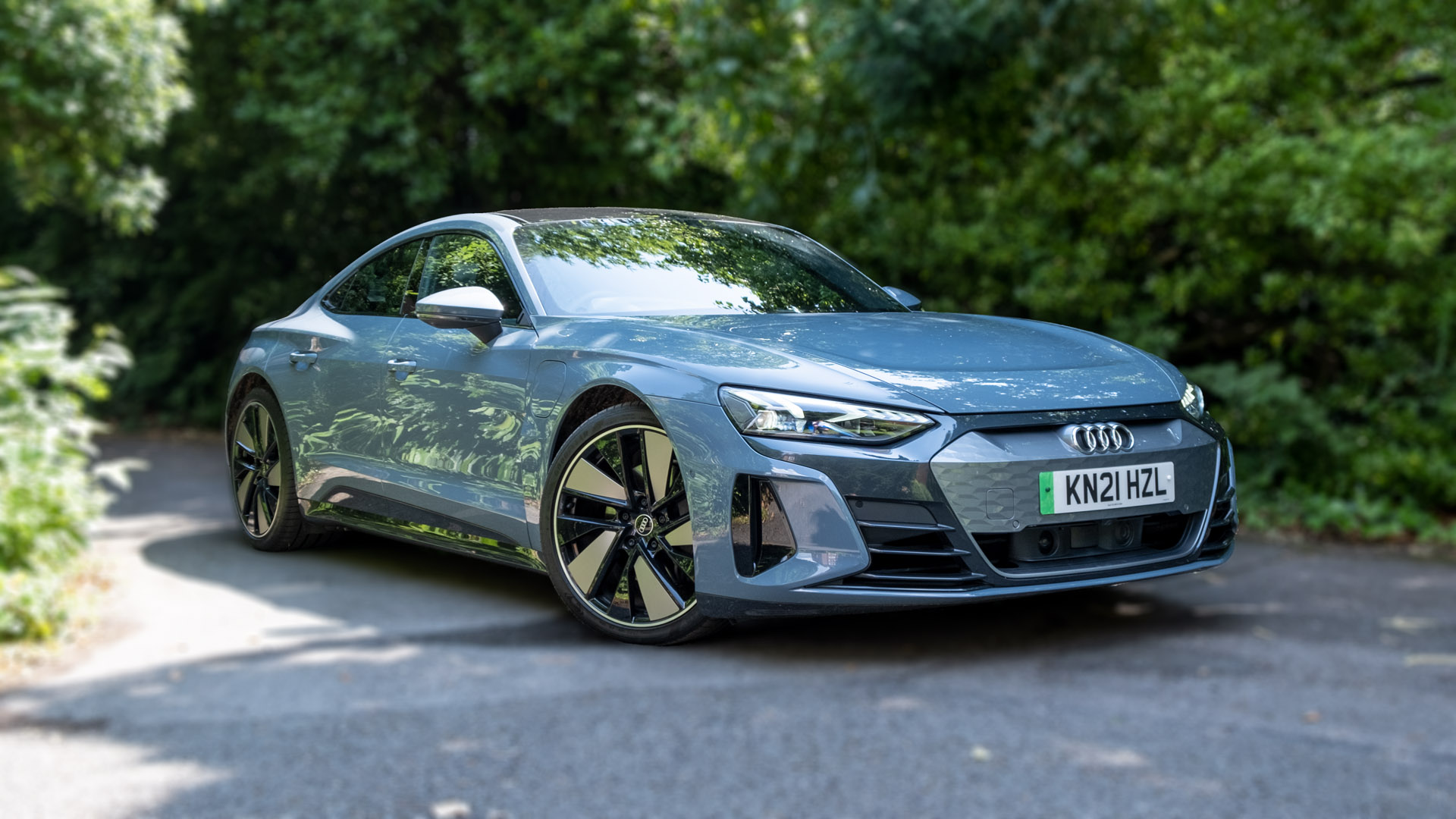
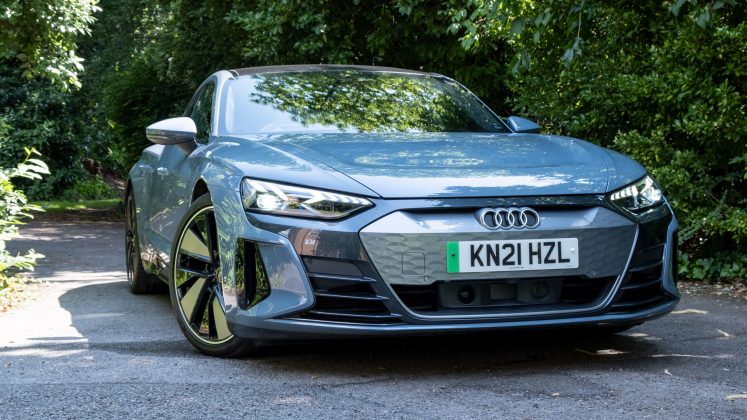
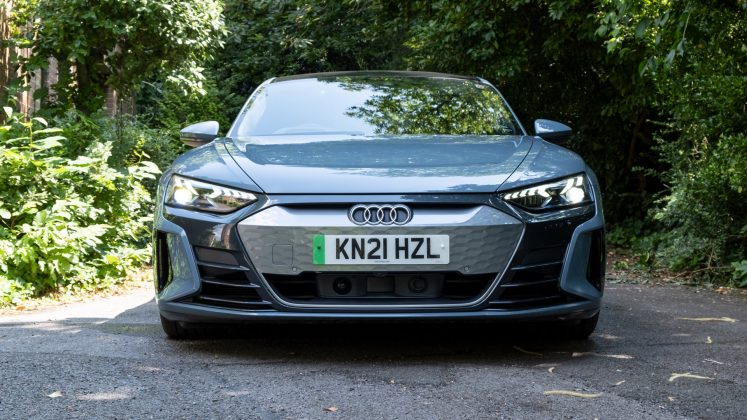
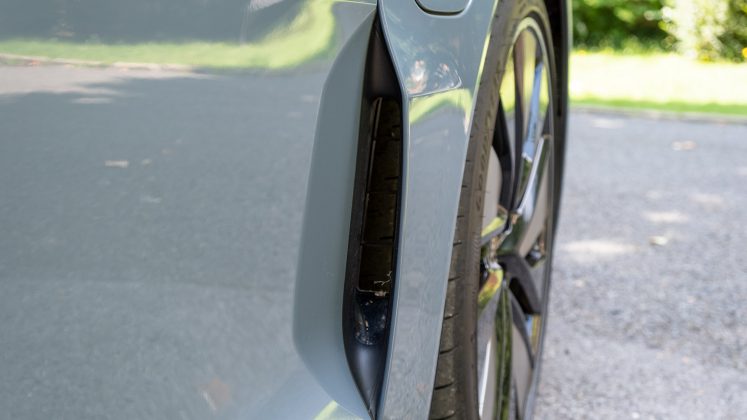
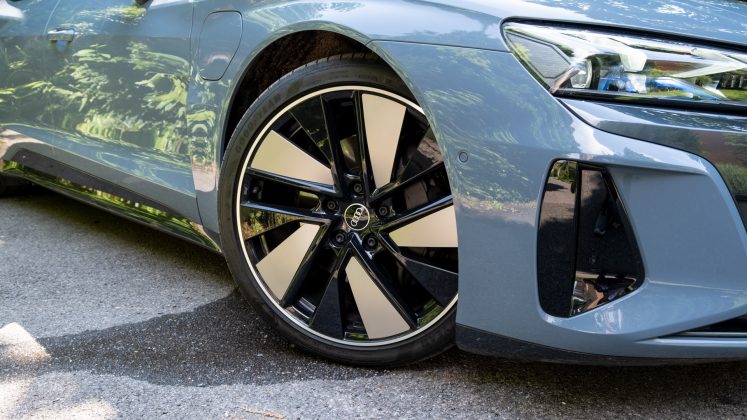
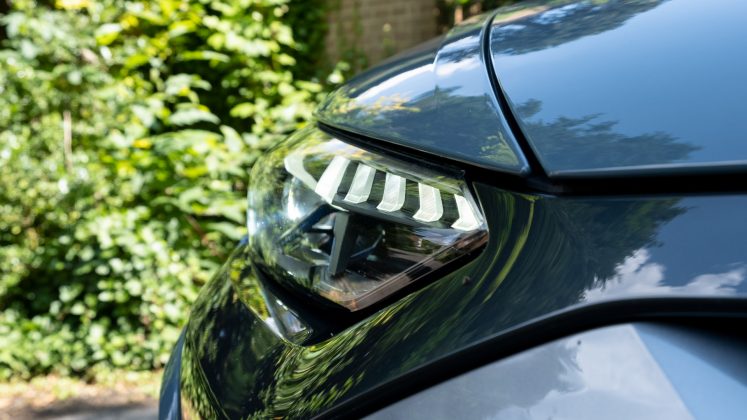
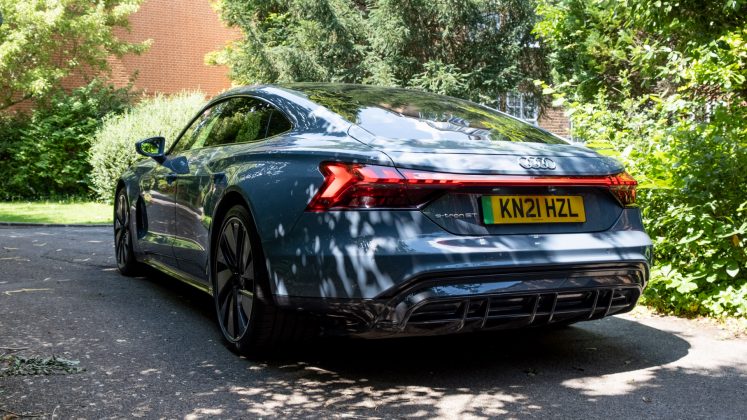
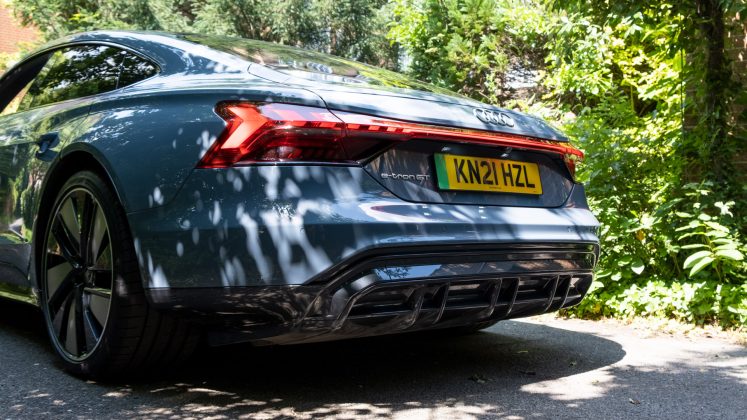
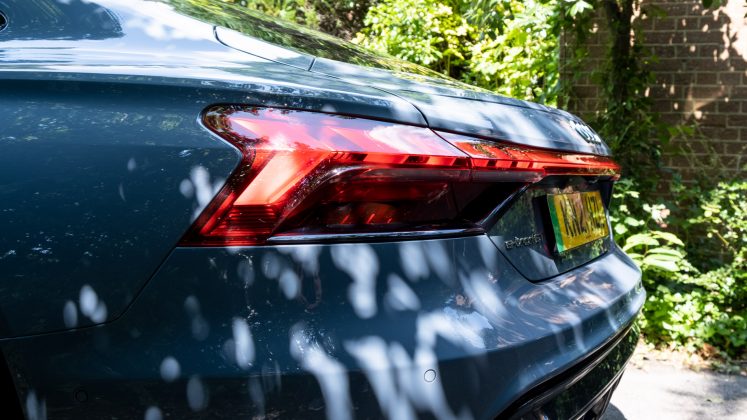
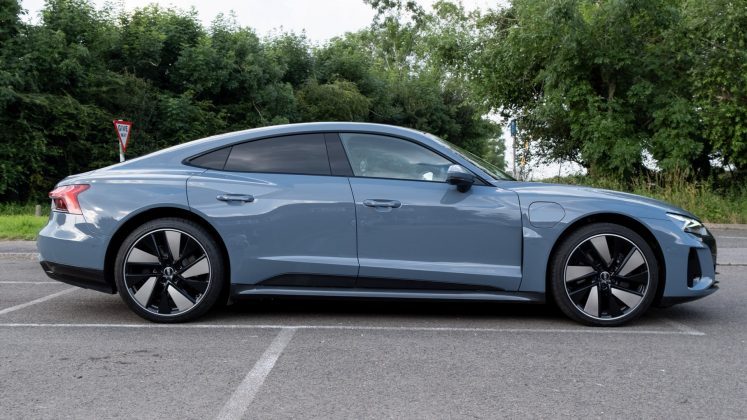


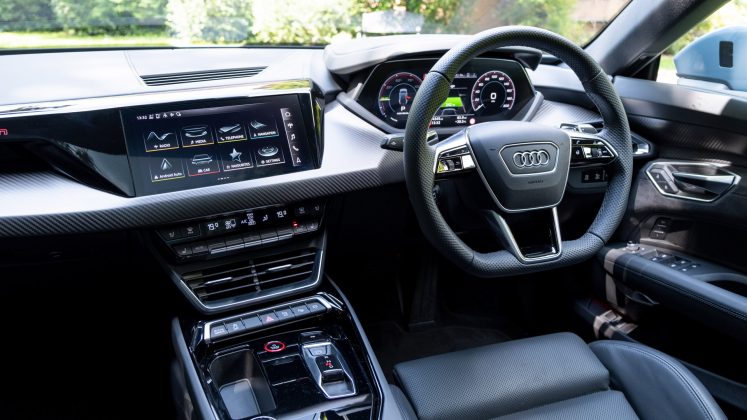
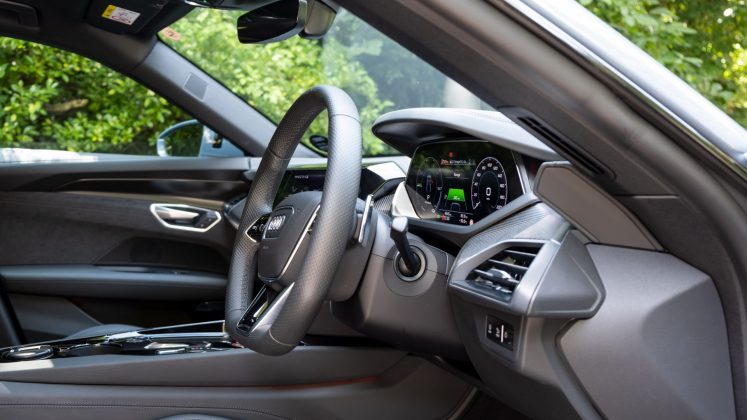
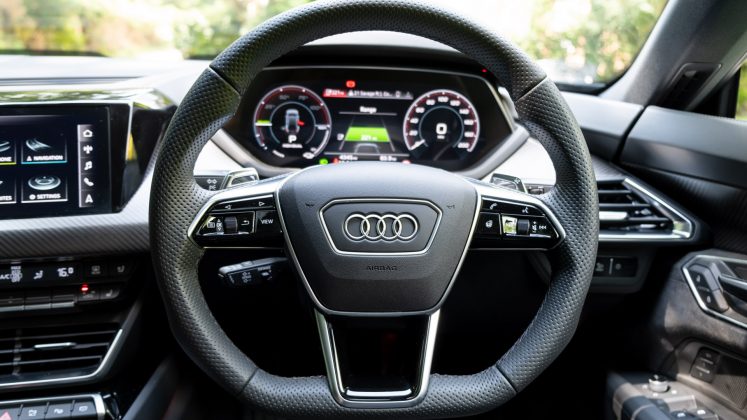
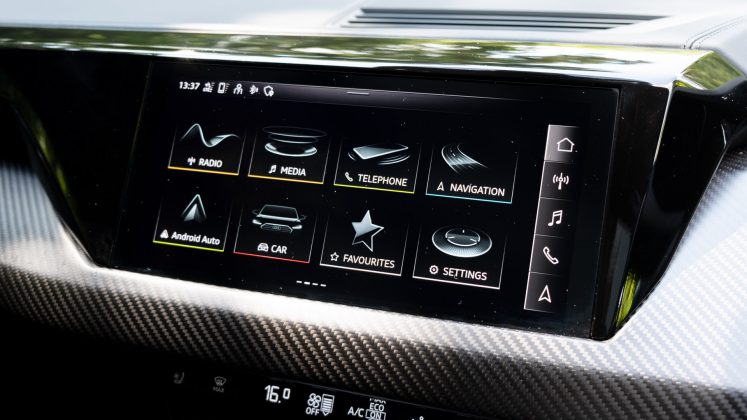
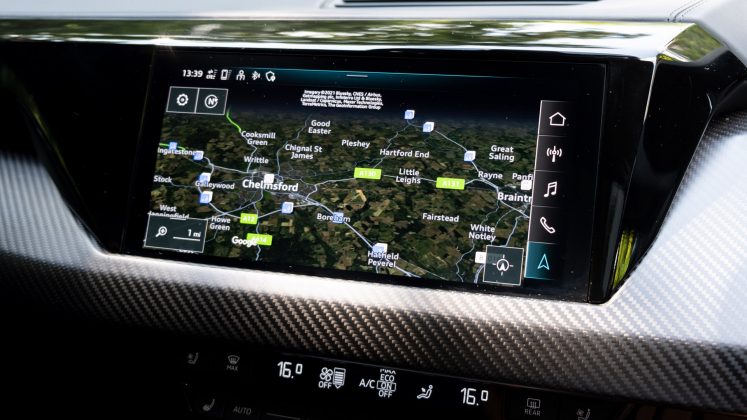
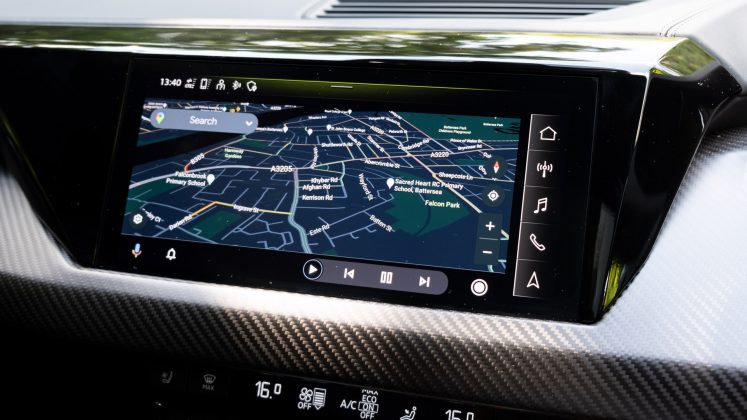
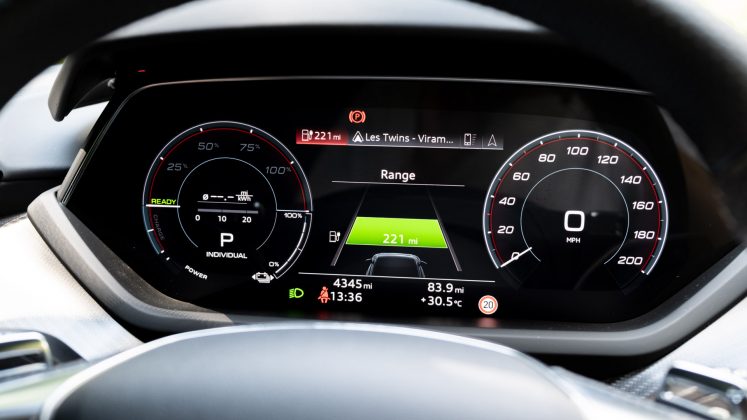
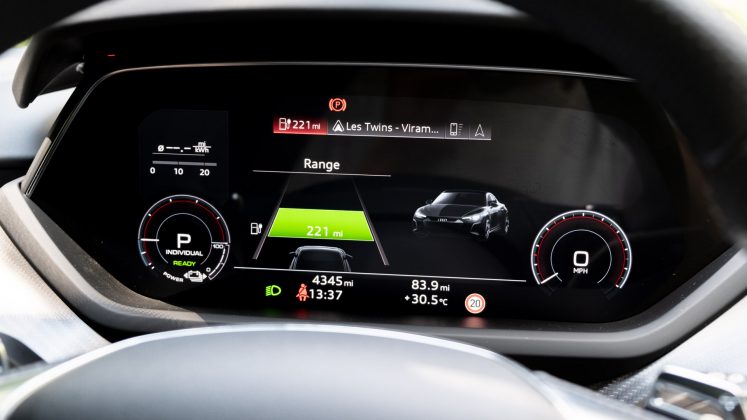
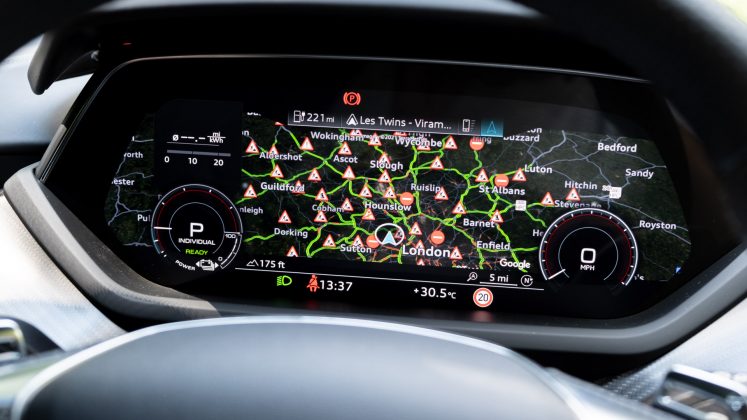
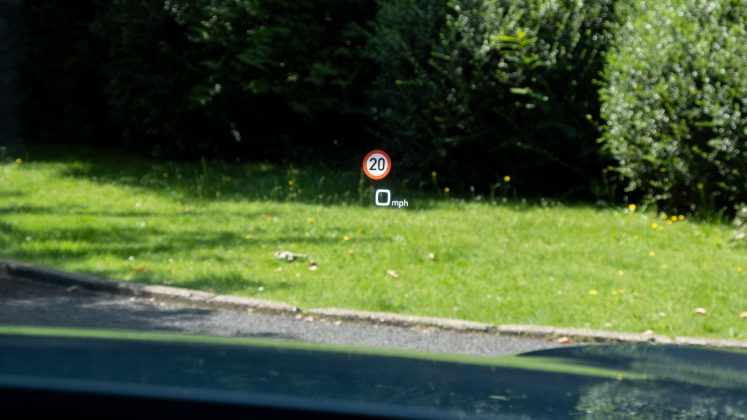
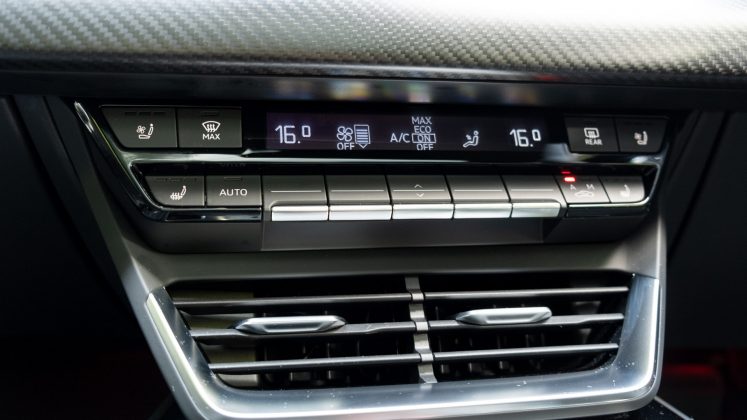
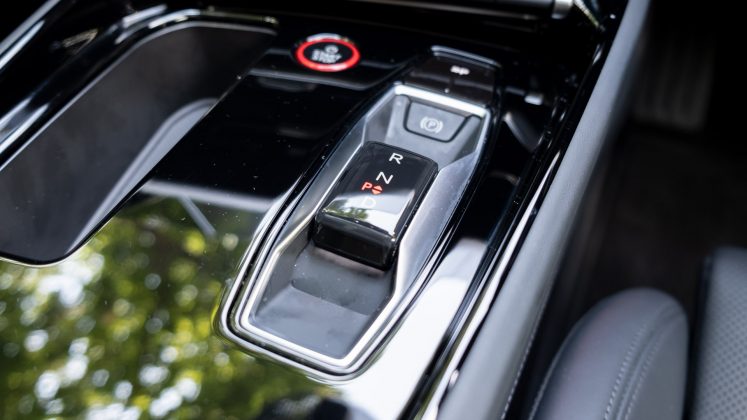
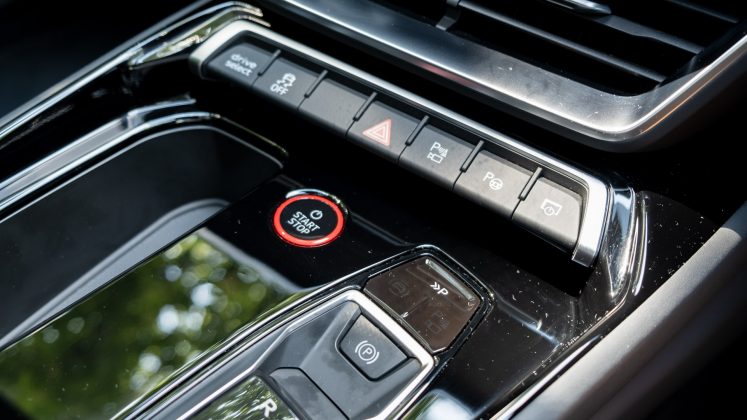
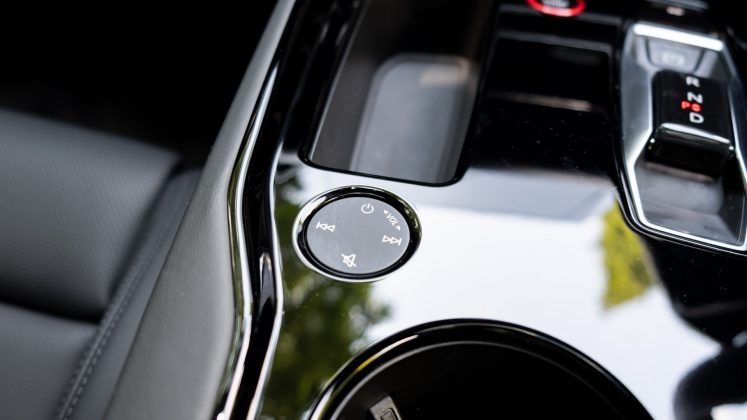
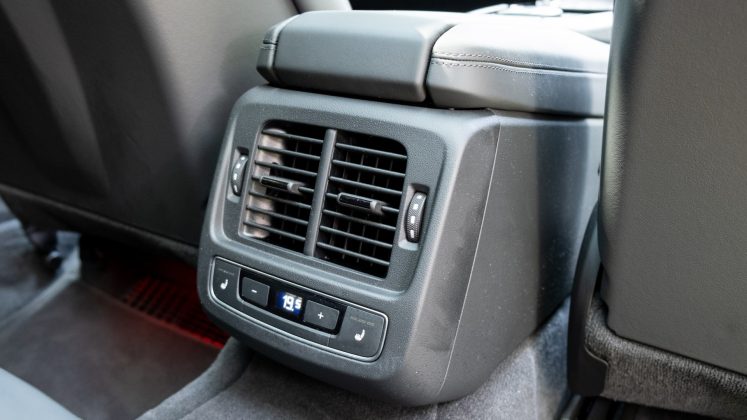
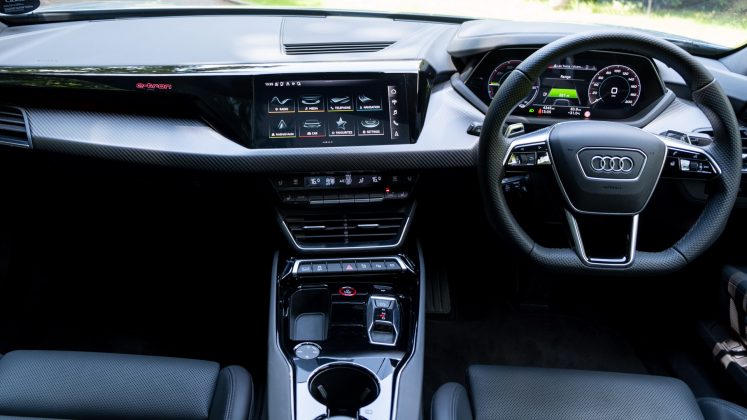
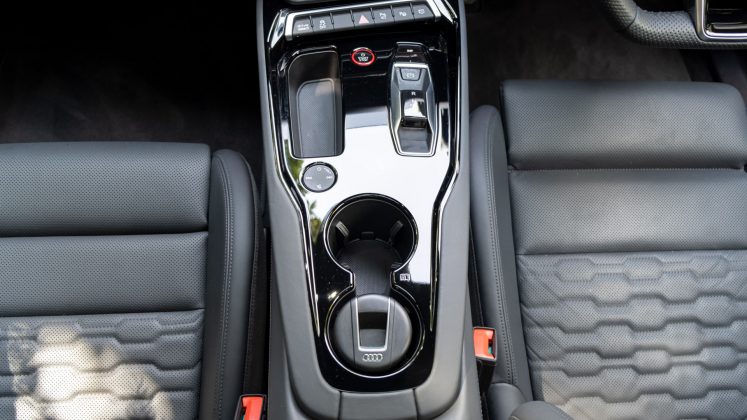
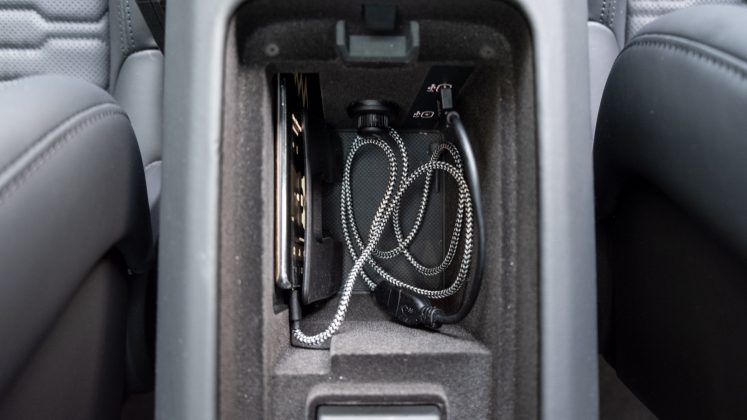
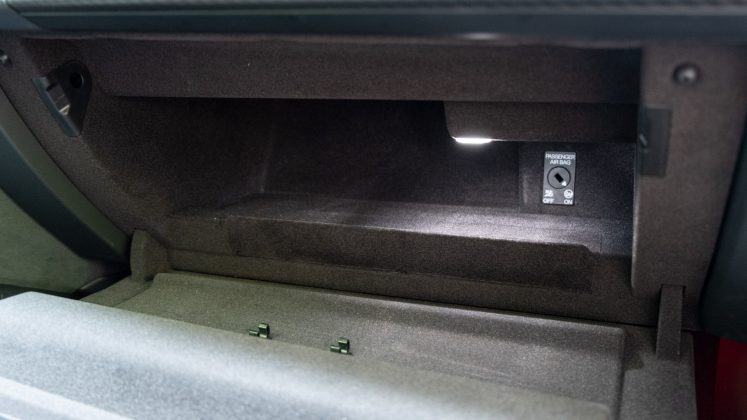
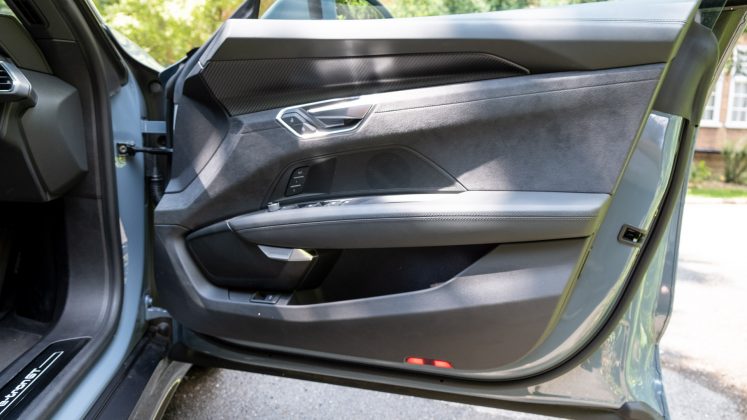
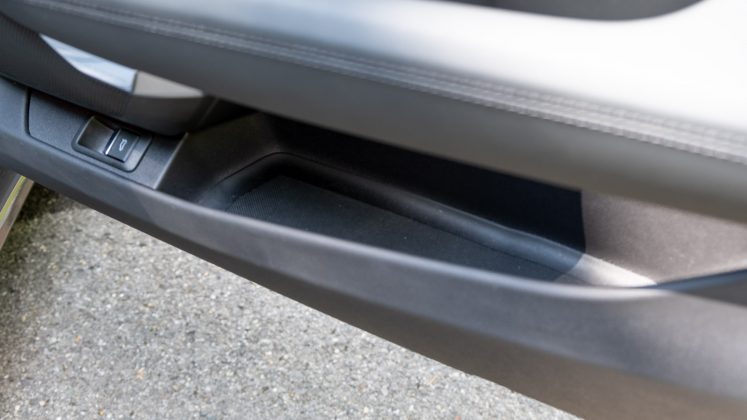
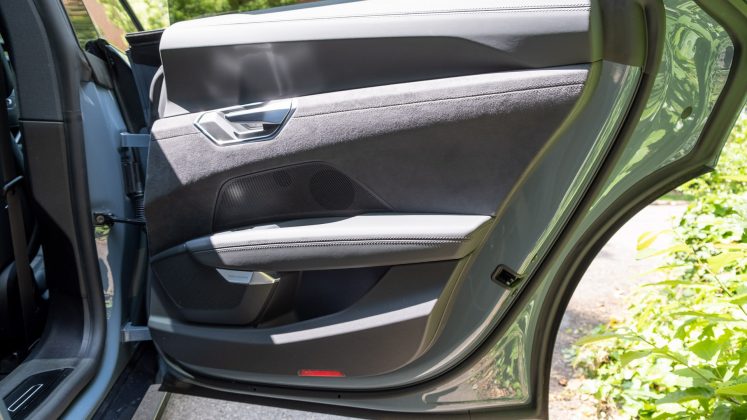
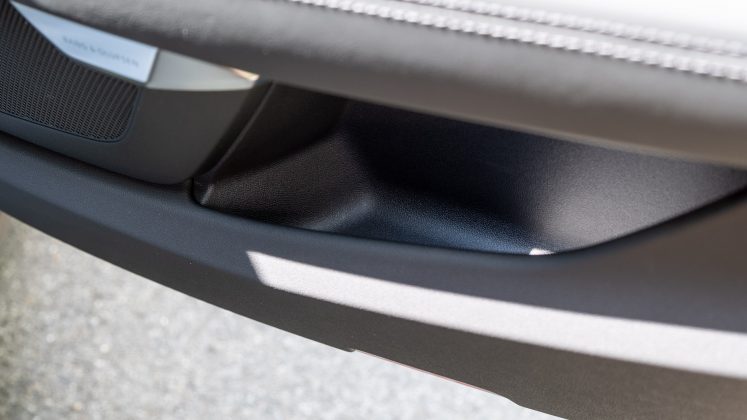
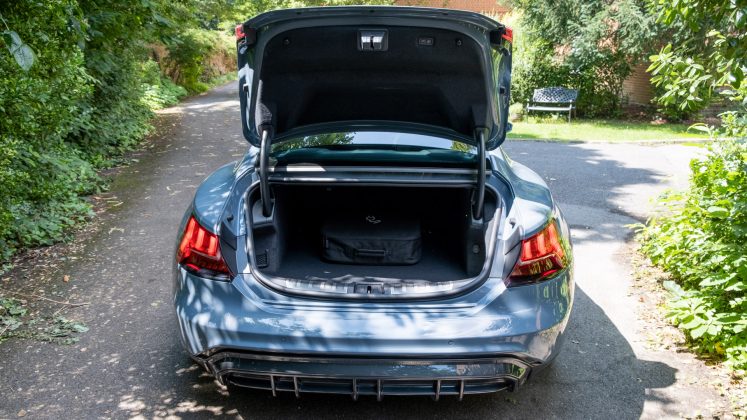
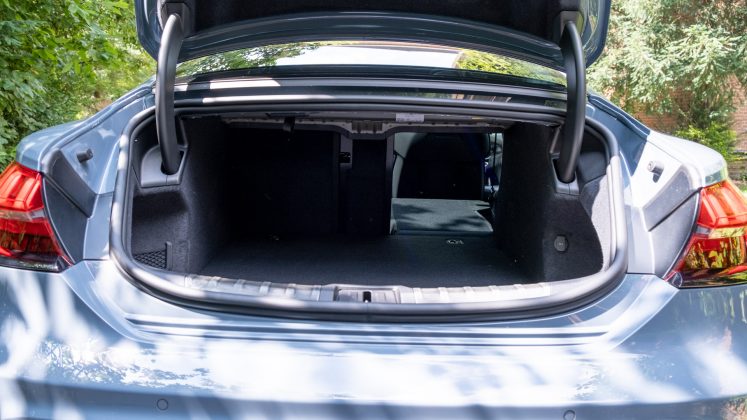
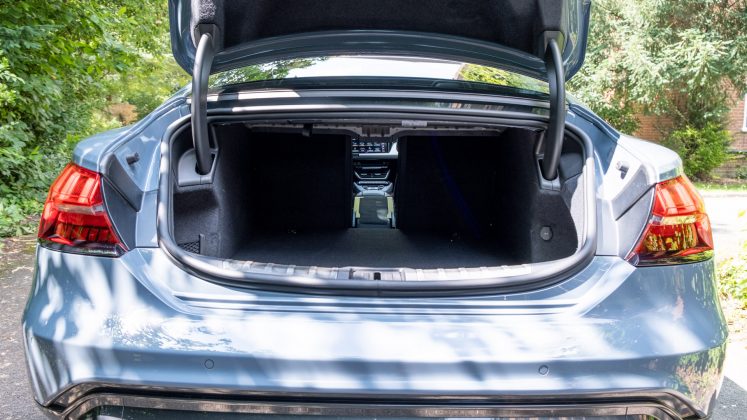
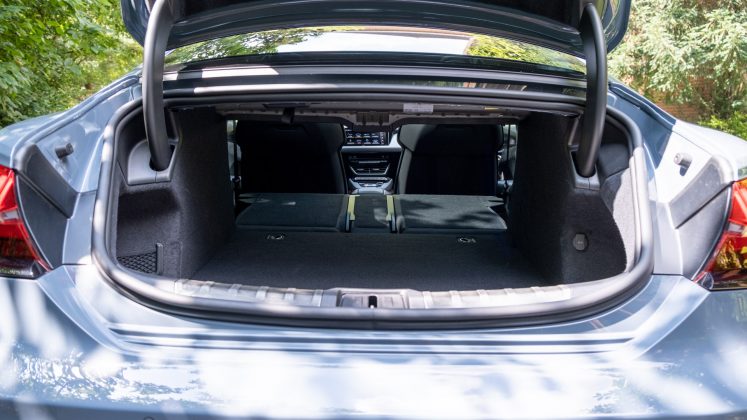
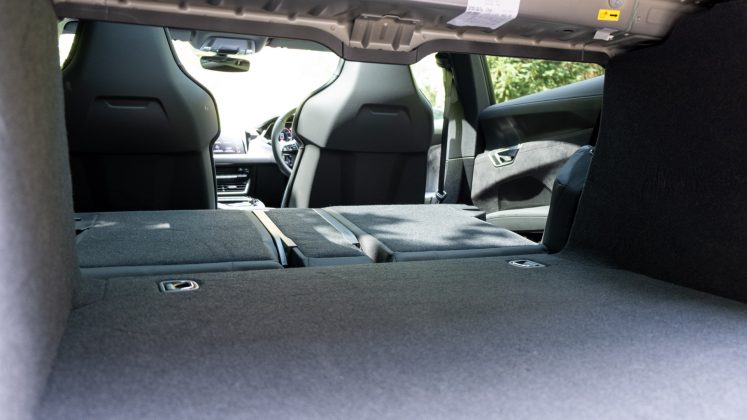
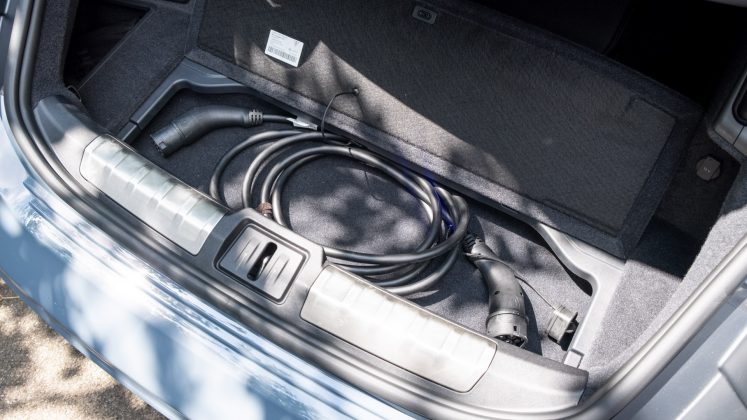
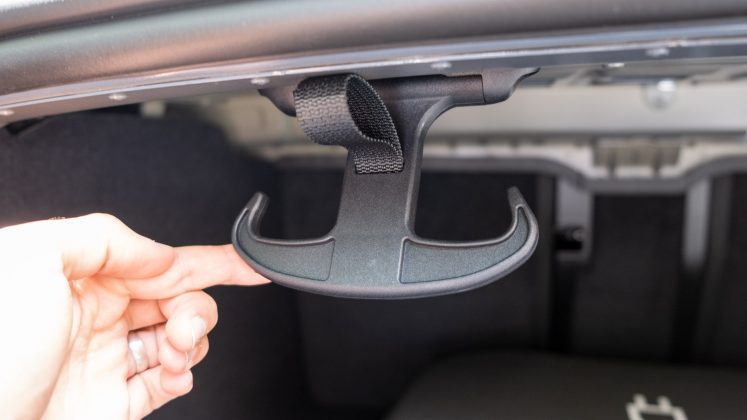

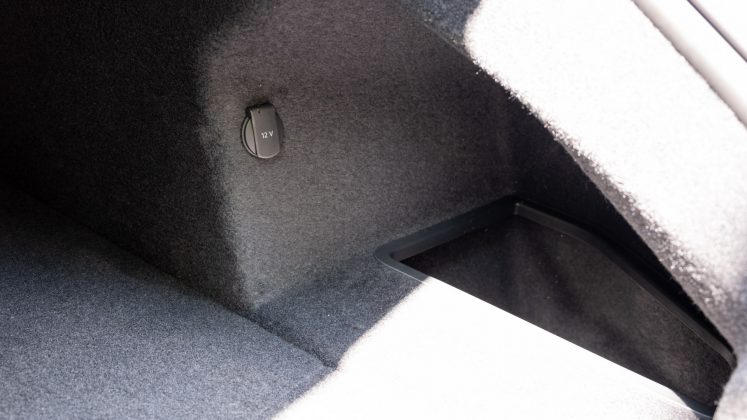
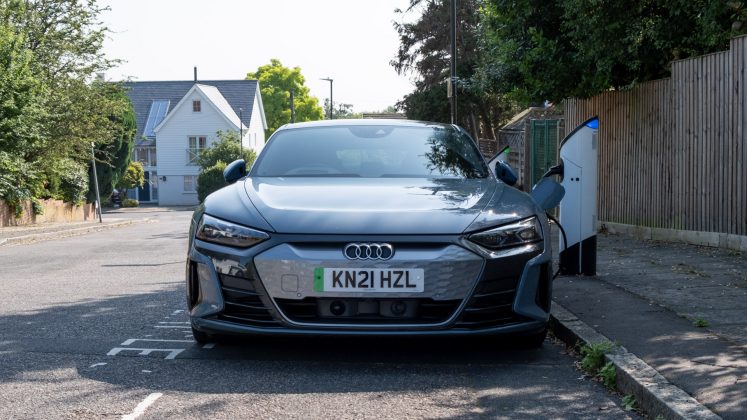
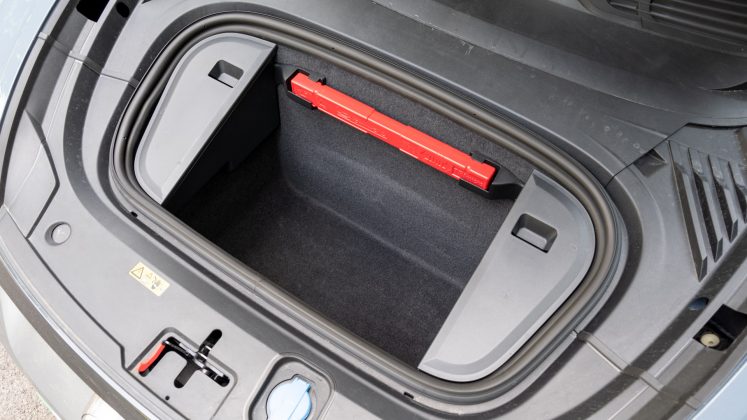
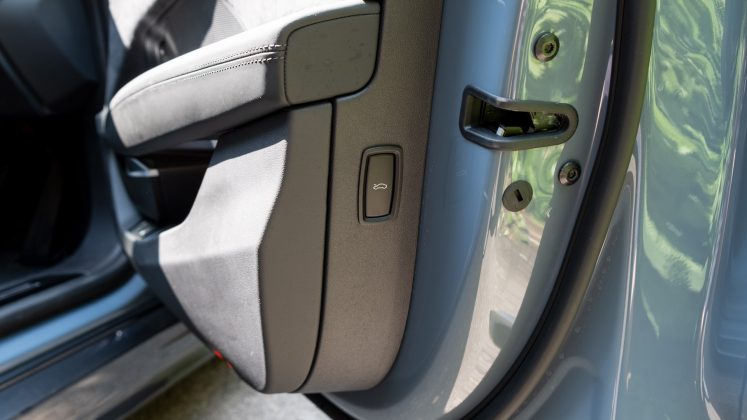
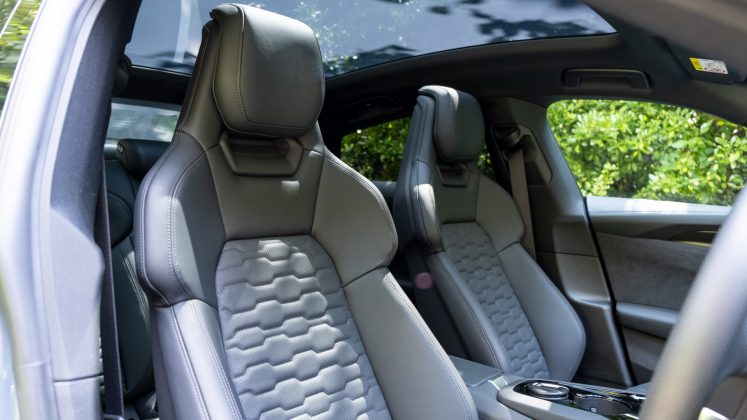
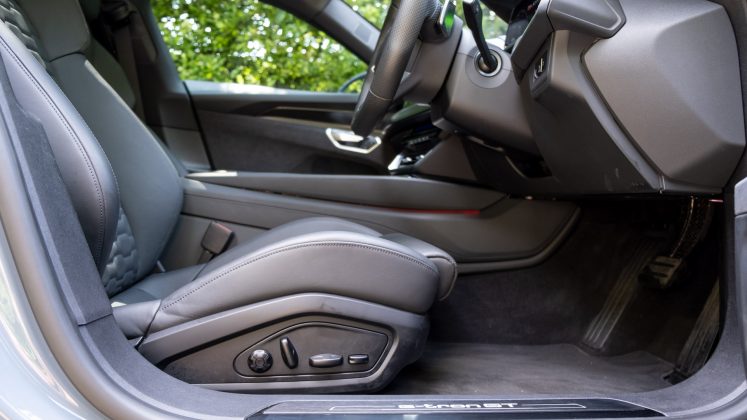
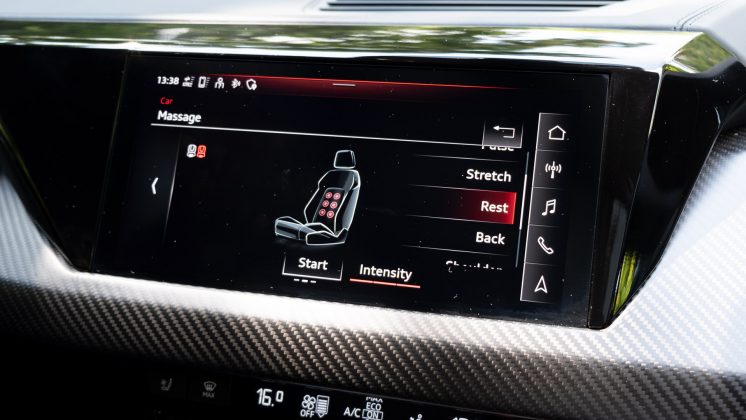

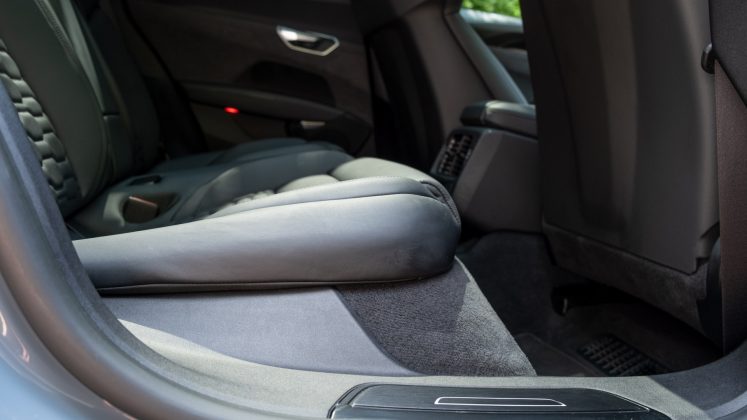
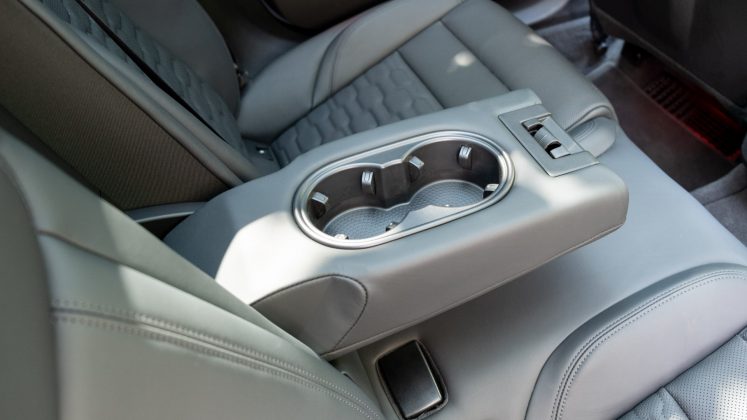
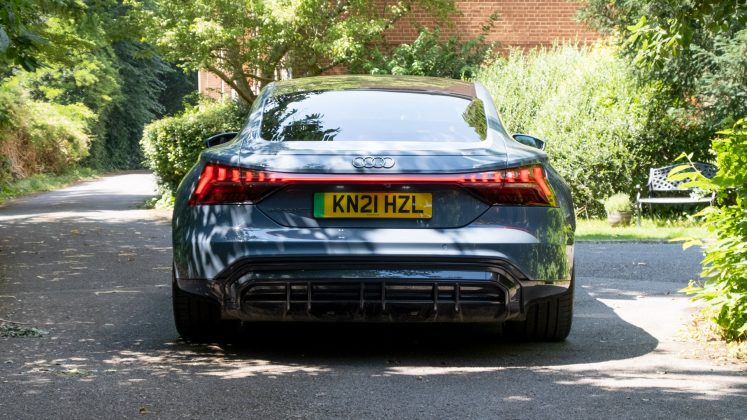
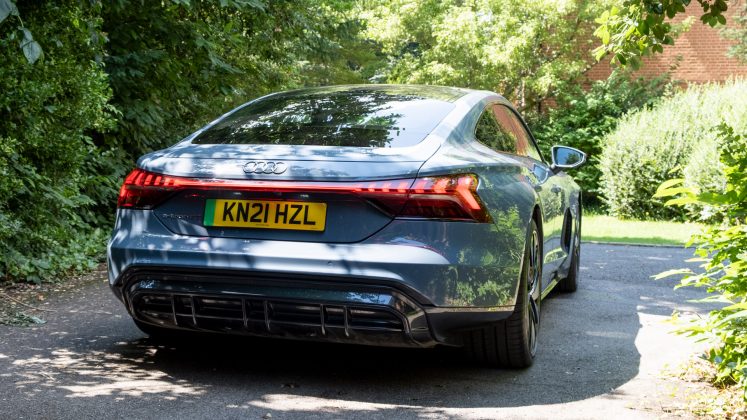
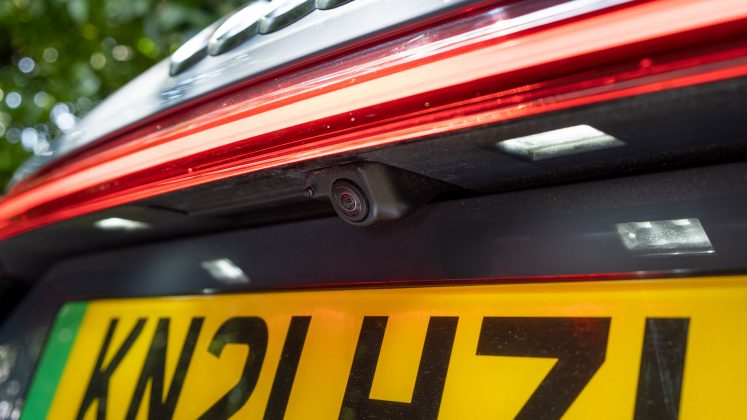
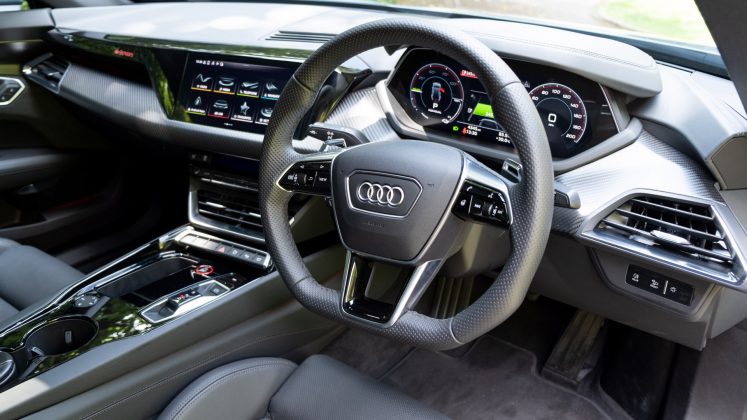
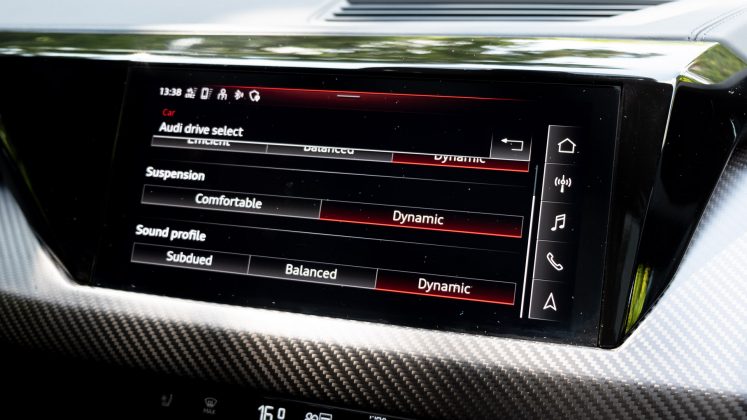

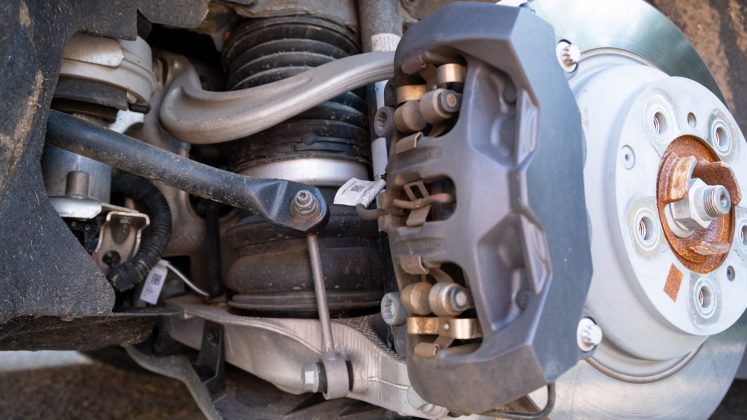
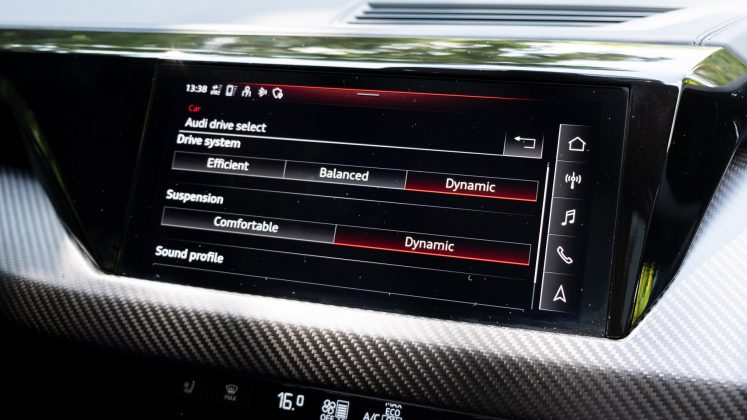
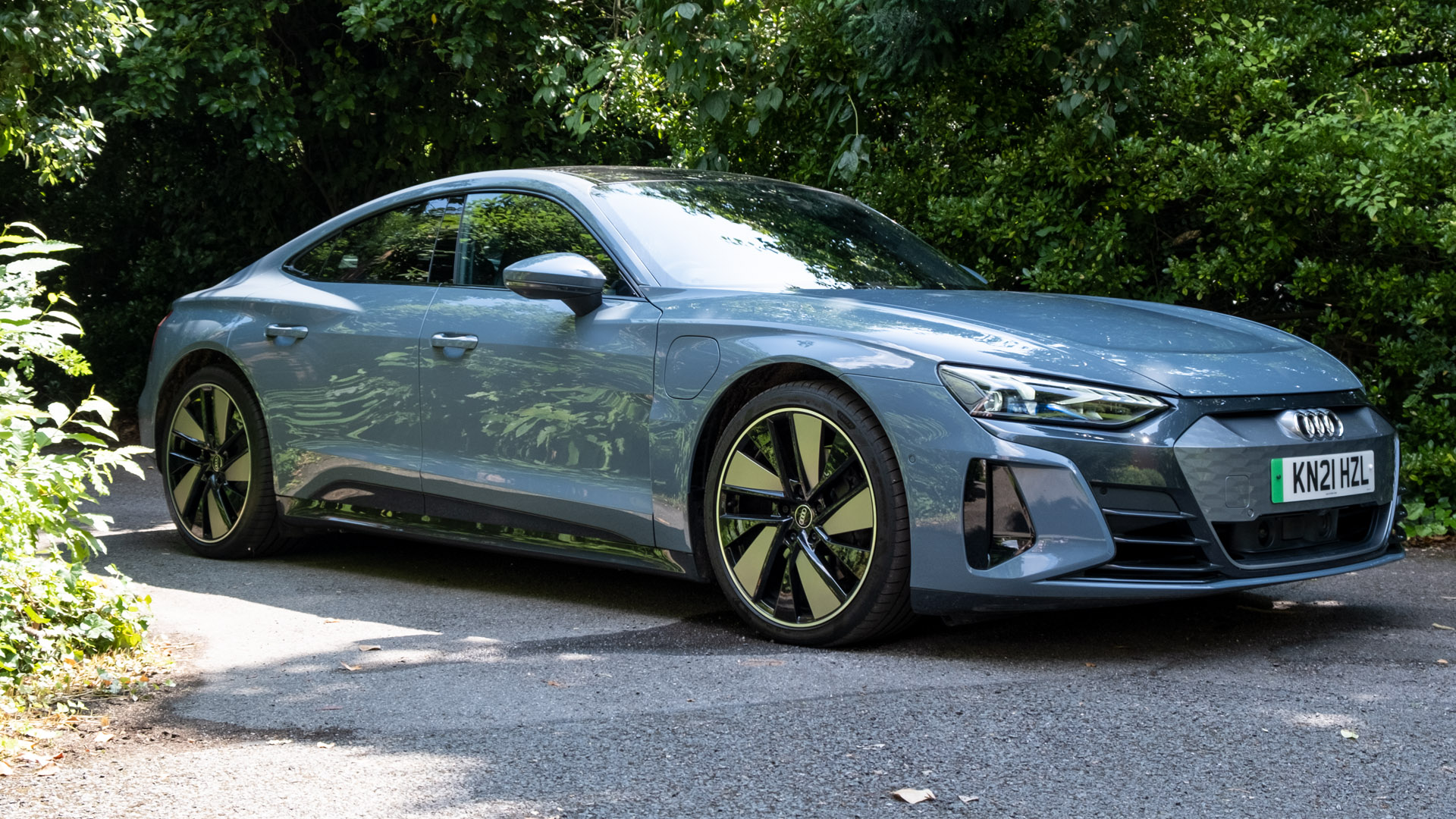
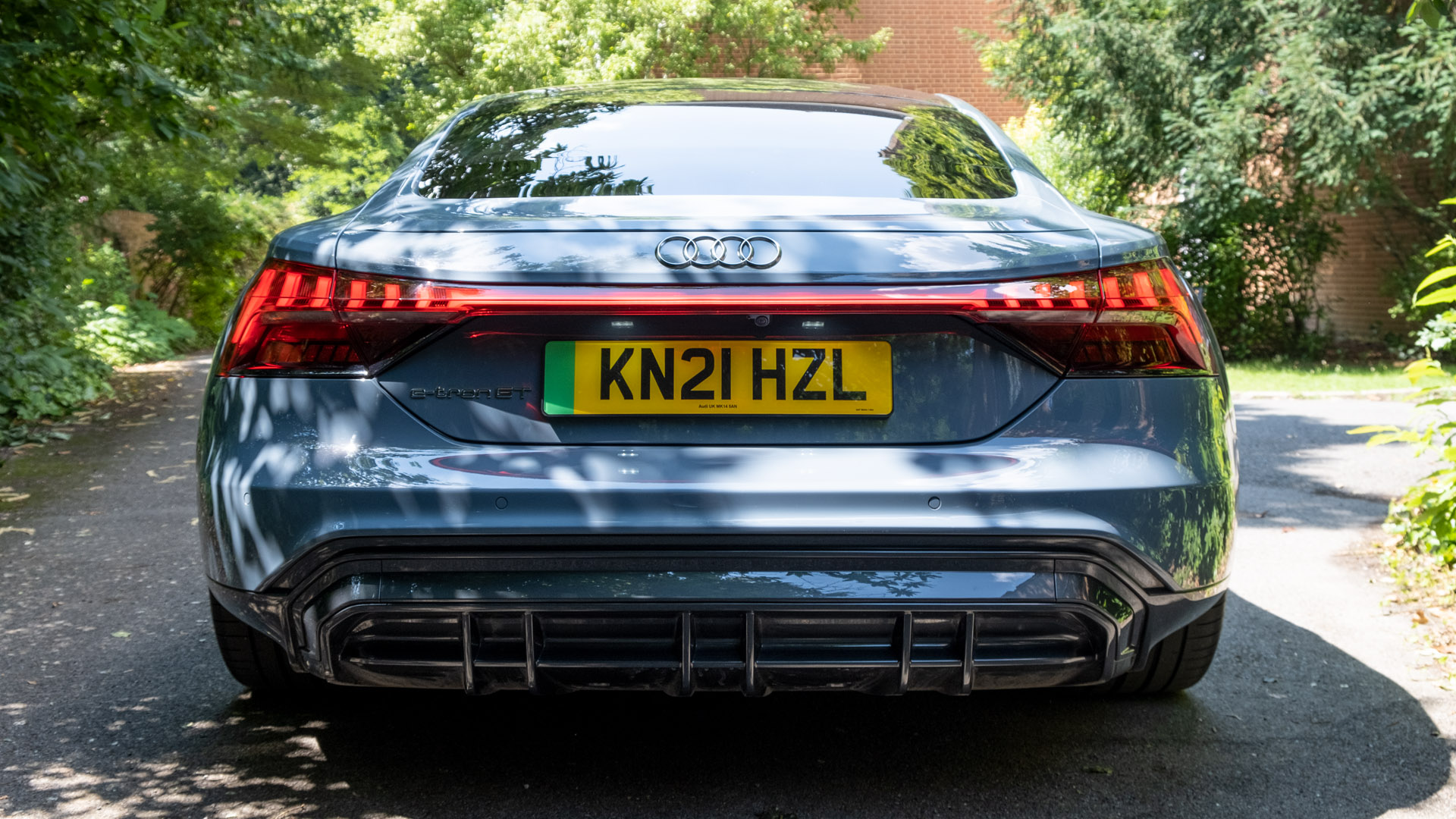

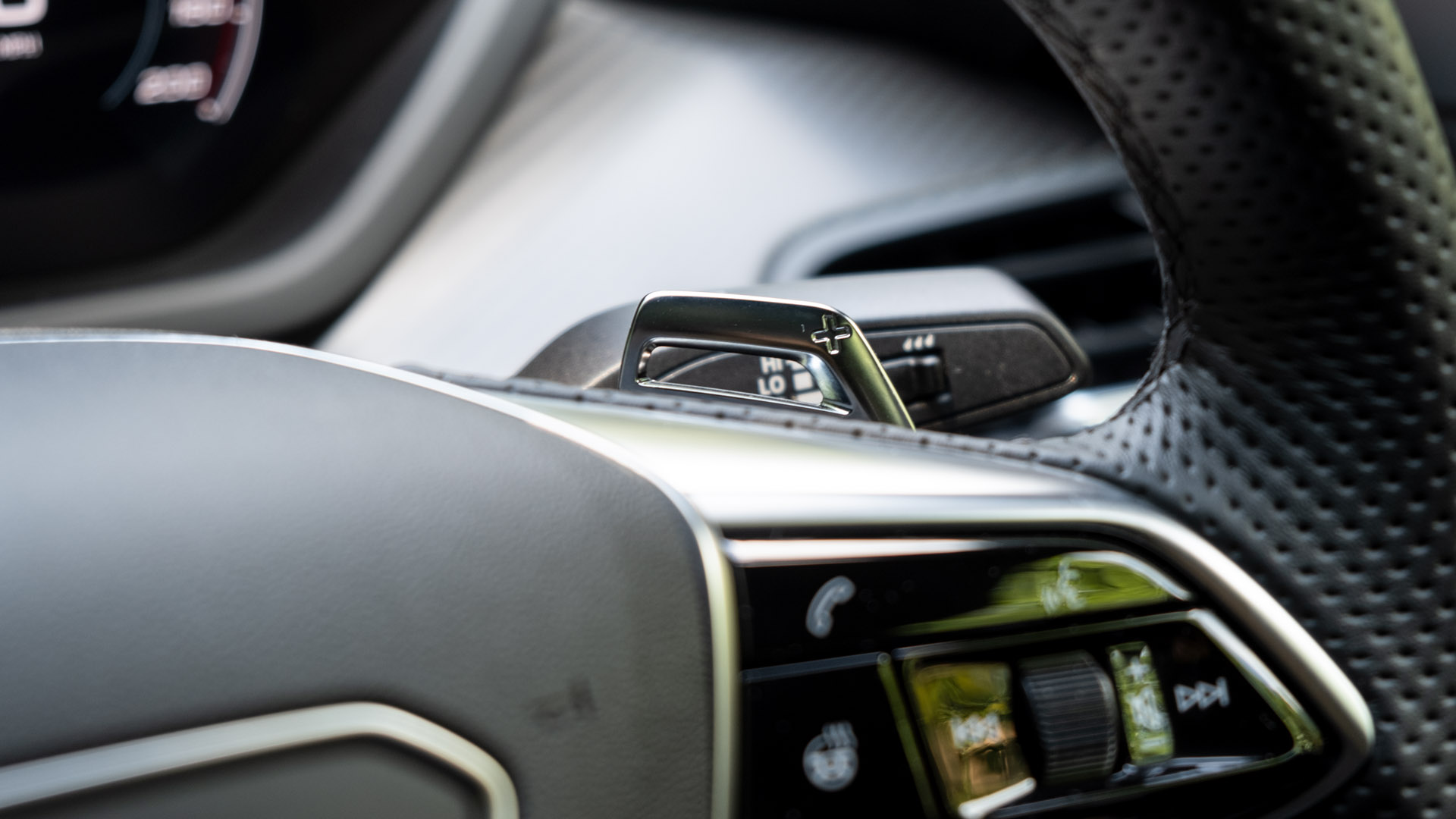
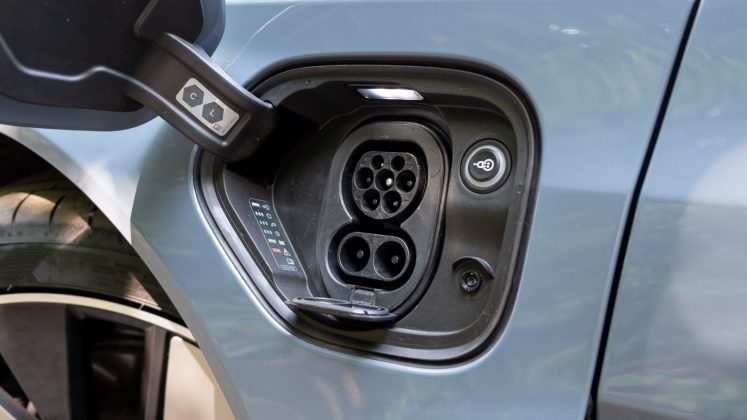
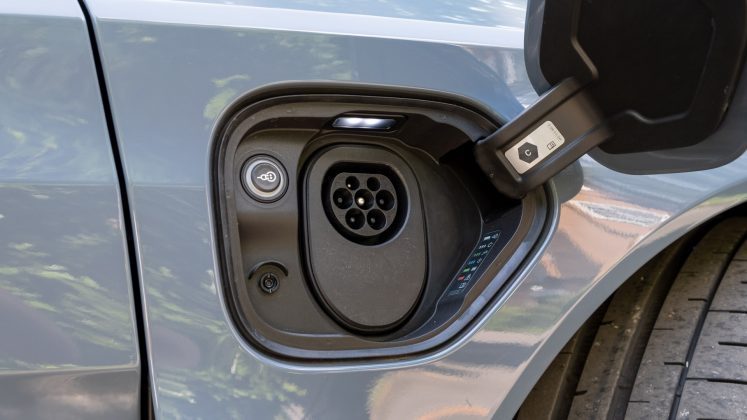
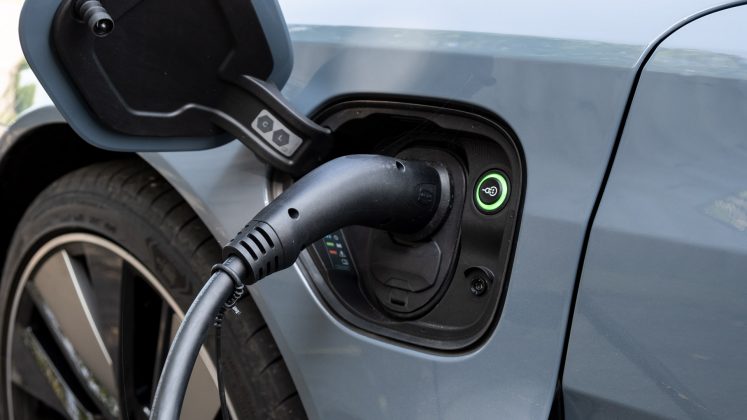
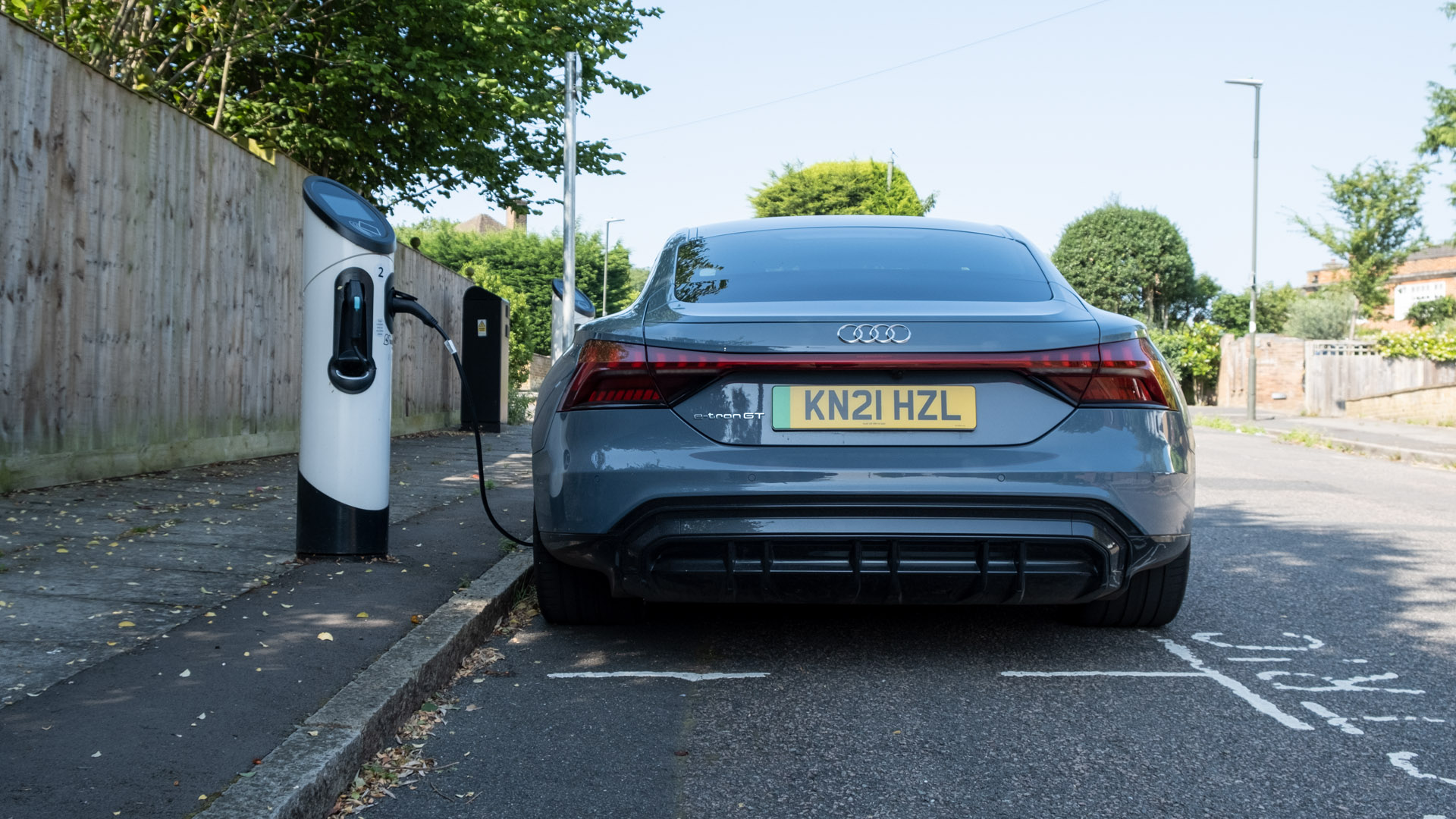

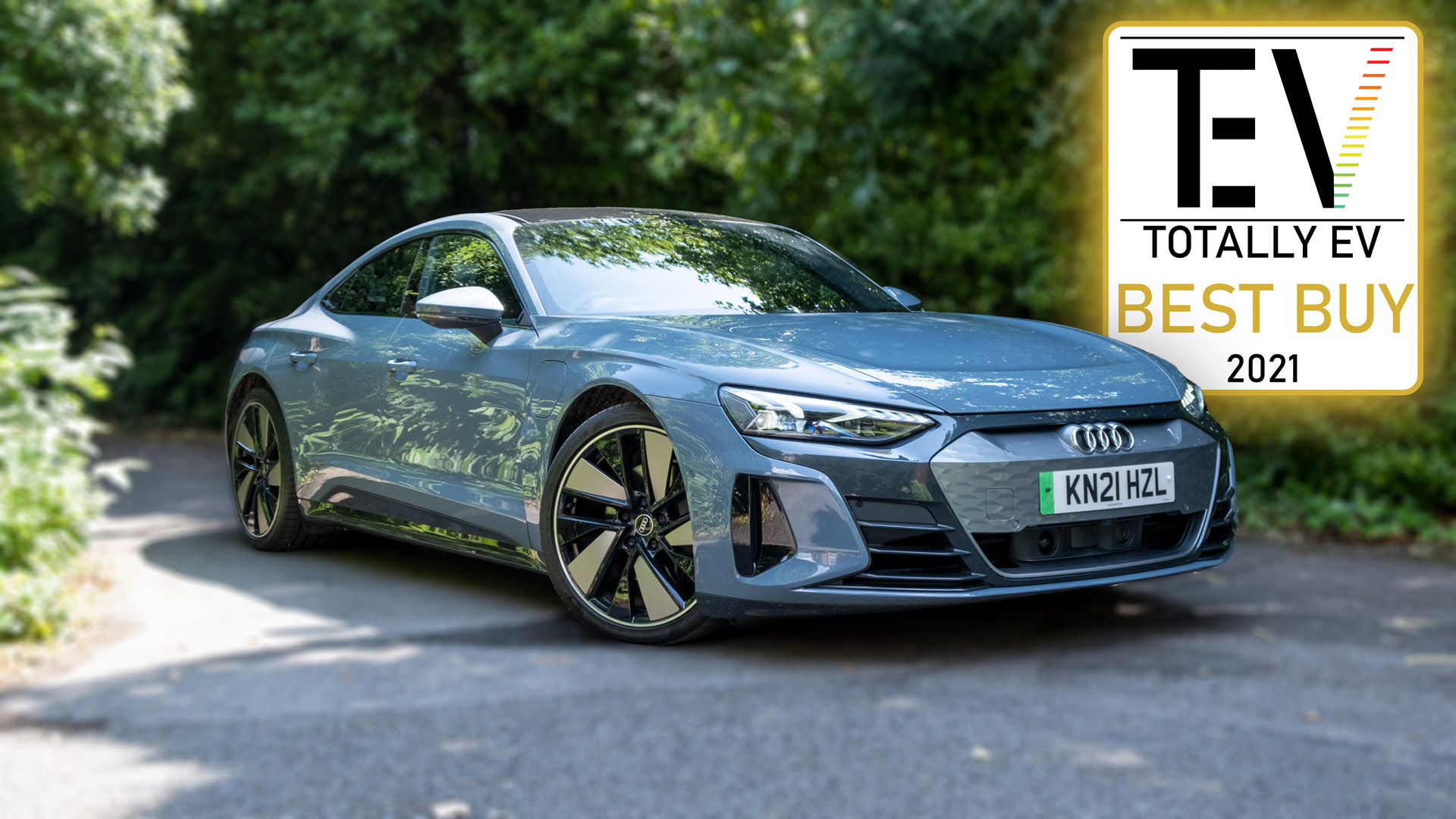




Not sure what was up with your Taycan Turbo review. You tested in the wet, which may be it, or possibly temps were low, but owners never see below 200mi driving reasonably on reasonable weather.
I drive from San Francisco to Los Angeles regularly and on that run I consistently get 270mi doing 75-80mph flat out the entire way in my Turbo. Browse the owner forums and you’ll see this is typical.
Pleased to hear you’re getting great range, though, the speed you’re driving at (75-80mph) is illegal, isn’t it?
Our tests are pretty much the same across the board, you’ll also see the results of the Taycan CT, which were tested under the exact same roads as the Taycan: https://totallyev.net/porsche-taycan-cross-turismo-review-best-electric-porsche/
Nonetheless, the 190-mile figure for the Taycan was quite generous. All we can do is compare and contrast between vehicles that are tested under the same circumstances – your driving style and conditions will undoubtedly be different.